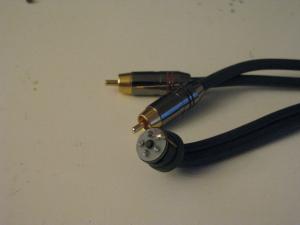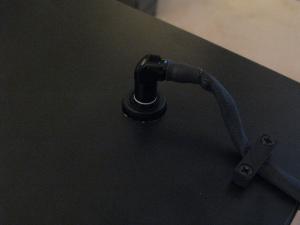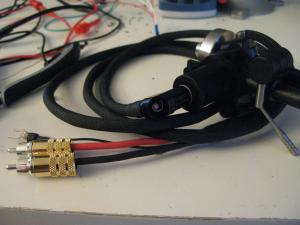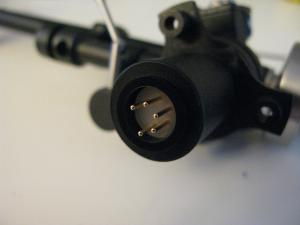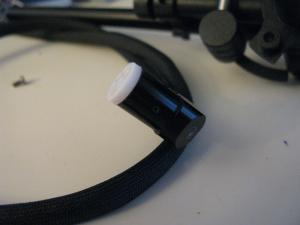-
Posts
13,713 -
Joined
-
Last visited
-
Days Won
39
Content Type
Profiles
Forums
Events
Everything posted by luvdunhill
-
A
-
We'll just have too see who sees sparks first, we are at just about the same point
-
and D2, D5, D8 and D11 are wrong in the PSU, should be zeners
-

Couple questions for first speaker build
luvdunhill replied to mugdecoffee's topic in Do It Yourself
I would go the spike route personally. Perhaps use some threaded inserts with a threaded spike. I always glue the baffle and have bonded material to the walls and even added interior cavities without problem. The fact that your joints are perfect might further underscore the need to glue the baffle if you're concerned at all about airtightedness. -

Has the DAC landscape gotten convoluted lately?
luvdunhill replied to Superpredator's topic in Home Source Components
Not that I'm volunteering to plug it into my gear, but that would be an ideal test scenario, IMHO -
$300 worth of SMD parts. Those Vishay TNPW resistors can really add up.
-
wow, that's very nice!
-
scary indeed.... what value fuse are you using? didn't see it on the schematic and a search for "fuse" on this thread returned zero results...
-

Has the DAC landscape gotten convoluted lately?
luvdunhill replied to Superpredator's topic in Home Source Components
Is ACSS directly compatible with Krell's CAST? -
yeah, I have a little setup for BH and KGSS PSU testing I can use. I'm only doing one supply at a time anyways, so looks like maximum 25W (500V @ 48mA which is 60% of maximum 80mA). I I was just more surprised when you said water (thought process was: waters' conductive, right? wait, no it's not but the materials are...)
-
You would need pure water, right? Perhaps I need to retake chemistry?
-

RIP: Meridian G08 (9/19/08 never forget)
luvdunhill replied to bhd812's topic in Home Source Components
oh, I was referring to the "broken" part.... oh wait, perhaps you were too? -

RIP: Meridian G08 (9/19/08 never forget)
luvdunhill replied to bhd812's topic in Home Source Components
NTTIAWWT -
wait, water?! Any idea of the current draw of the 60v supply or the two 12v supplies?
-
Keystone makes some at Mouser that have loop holes for grabber probes.
-
Going to visit a friend in a couple weeks and would like to bring "something special". This is a lot to ask but anyone have anythig they could shoot my way? I might have a nice treat from Reks, but wanted something a bit more contraband
-
justin != kevin gilmore
-
aaahh. I had it turned around in my head with the toroids at the front of the chassis. Any reason that wouldn't work? It would avoid running the outputs back through the toroids... edit: probably the output umbilicals wouldn't fit against the caps...
-
started working on my PSU. I have a few questions - which way should the screw connectors face? Perhaps it is obvious, but I wanted to double check as those are a pain to remove. I looked at some of Inu's photos, but didn't find a good one of the entire thing wired. Perhaps Kevin has a picture somewhere in his usual detail? - how critical is R50 (290K on the 300v power supply)? I'm assuming this sets the output voltage? Would 300K work? - perhaps it would be worthwhile to add a note on the schematic that showed a recommended value for the unmarked power rating resistors. For example, the 300K resistors used for the capacitor stacking probably should be more than a 1/2W I'm guessing? - what current would you recommend testing the supplies at after they are built? I was assuming the current limited value? I'd like to order some test resistors, that's why I ask. I don't have any supercooling abilities, so I'll probably test one supply at a time then hope for the best from there. - I'm not sure if anyone has fired up their board that isn't using the SumR transformers (Craig?) I'm assuming the 47 ohm heater resistors might need to be adjusted?
-
I think it's time to play with the Vf of the cathode LEDs, just need to drag out the LED box and get a good jig to measure Vf at the proper current and voltage. Any I/V recommendations Doug?
-
I've made the change and found that it sounds significantly better for the headphones that are at the 80%+ mark on the volume dial.
-
I forewent my usual sensibilities and did 5 minutes of "research" and bought a Brother HL-3070CW printer. I hope it doesn't suck.
-
RB301 to DIN conversion: [ATTACH=CONFIG]3441[/ATTACH] [ATTACH=CONFIG]3444[/ATTACH] [ATTACH=CONFIG]3445[/ATTACH] [ATTACH=CONFIG]3443[/ATTACH] [ATTACH=CONFIG]3442[/ATTACH]
-
ok, well if you decide to do it, it's rather simple and the noise increase was unnoticeable from what I heard.
-
Deepak, do you have Digipete's Pearl? If not, you can eek some more gain out of it. Anyone know what the hex key size is to adjust the RB301 arm lift? I don't have one that says "damn small" in my set...


